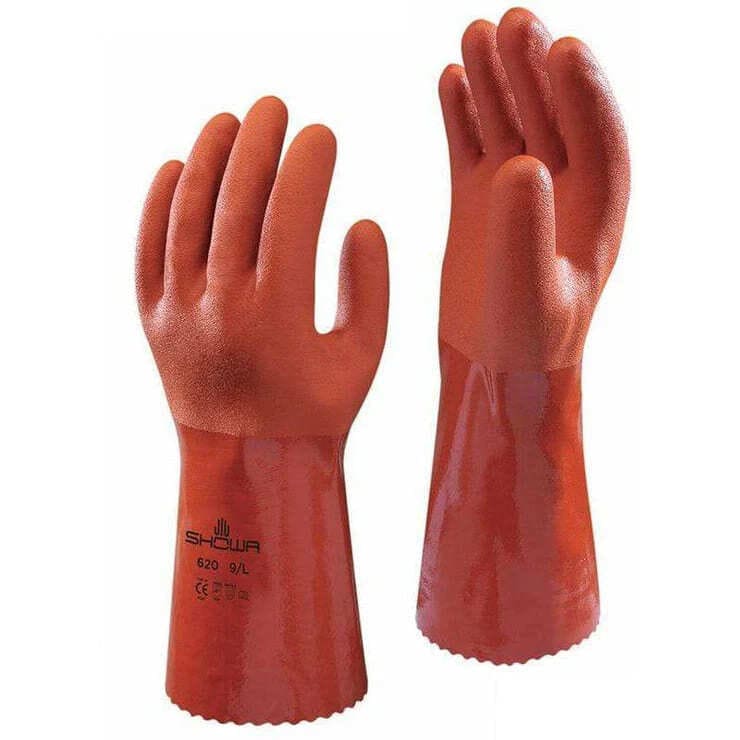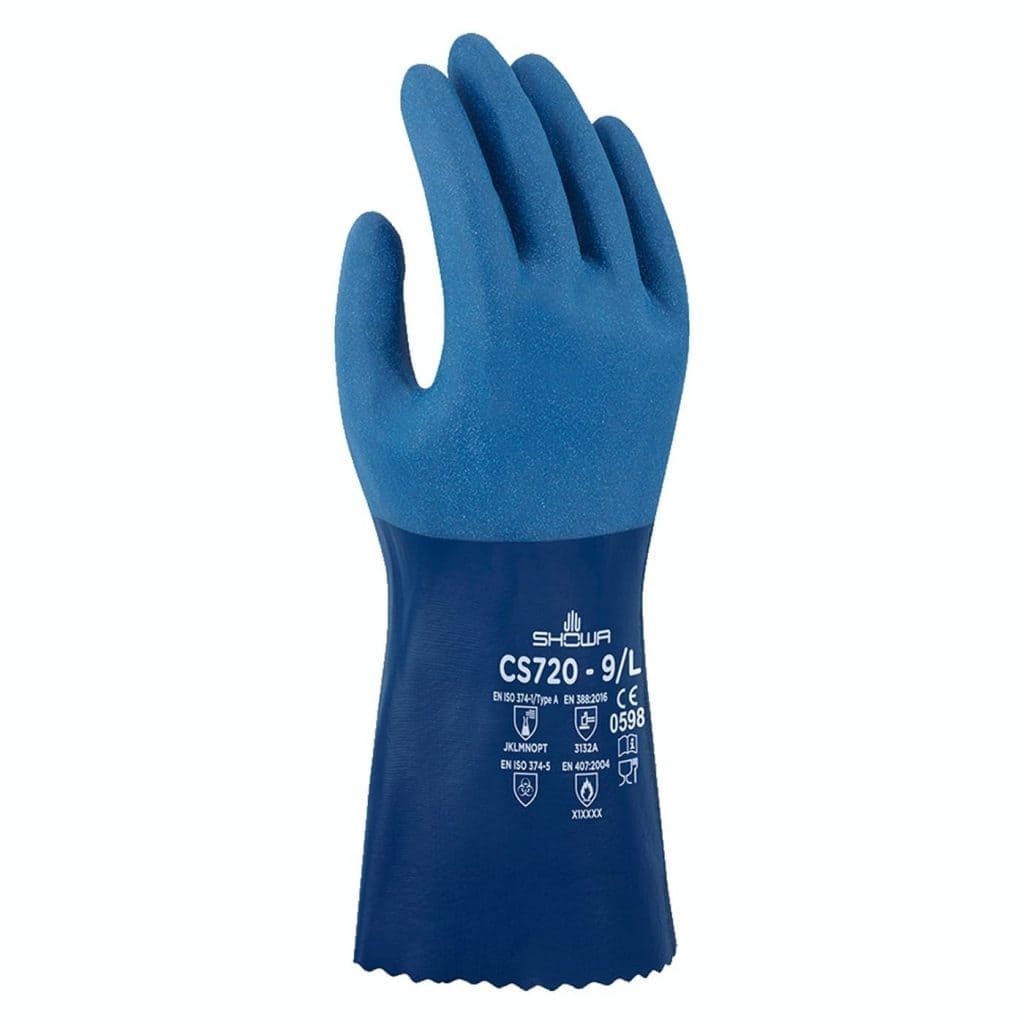Drysuit Gloves: An Ultimate Divers Guide To Dry Glove Systems
Do you need to keep your hands warmer and fingers nimble during cold water dives? The quest for the perfect drysuit gloves is a common challenge for divers seeking a personal balance between thermal comfort and dexterity.
This comprehensive guide to dry gloves covers everything from materials and ring seal systems to inner thermal gloves, accessories, and essential features.
Whether you’re a seasoned diver or just starting out diving with a drysuit, learn about the key elements that make drysuit gloves an essential choice for cold water diving.
How Do Drysuit Glove Systems Work?
A drysuit glove system functions in the same way as the drysuit itself. They form a waterproof shell to keep your hands dry while permitting the use of a thermal inner glove underneath.
When your drysuit glove system is functioning correctly, the only parts of a drysuit diver’s body exposed to water should be the head. If combined with a diving hood and/or a full-face mask, even the coldest water temperatures pose no barrier to comfortable diving.
What Are The Pros And Cons of Drysuit Gloves?
Compared to regular neoprene wetsuit gloves, dry gloves have a number of advantages and disadvantages:
Advantages of drysuit gloves:
- Improved Dexterity: Dry gloves may offer better overall dexterity compared to cold, numb fingers in thick neoprene wetsuit gloves. This enhances the diver’s ability to handle equipment and perform tasks underwater.
- Enhanced Warmth: Dry gloves provide superior insulation, keeping the hands much warmer during cold water dives. This contributes to overall comfort and safety.
- Variability: With a proper dry glove system, divers can choose gloves based on the diving conditions, allowing adaptability to different environments.
Disadvantages of drysuit gloves:
- Cost: Dry gloves can be an expensive dive gear purchase, especially compared with conventional neoprene diving gloves.
- Donning Difficulty: Some dry gloves can be challenging to put on or take off, requiring practice and patience.
- Dexterity Loss: Despite improved overall dexterity from having warm and nimble fingers, drysuit gloves are physically thicker and it takes practice to regain efficiency when operating scuba equipment.
- Risk of Flooding: The risk of widespread drysuit flooding exists if a tear or hole occurs in the gloves.
How Do Dry Gloves Fit Onto A Drysuit?
Drysuit gloves can be attached to a drysuit using different systems. Two common methods are ring seal systems and glue-on dry gloves.
Ring Seal Systems
Ring seal systems are a very popular method for attaching drysuit gloves. Here’s how they fit:
- Attachment Mechanism: Drysuit gloves with ring seal systems have a circular ring at the cuff. The drysuit has a corresponding ring that locks into the glove’s ring.
- Quick Clamps: Drysuit glove ring seal systems like Si-Tech use quick clamps for easy and fast attachment. These clamps snap securely onto the rings, creating a watertight seal.
- Flexibility: Ring seal systems offer flexibility as they allow divers to switch between dry gloves, neoprene gloves, or no gloves easily.
- Donning and Removal Process: Depending on design and brand, dry glove ring seals may be easy or frustrating to self-attach onto the drysuit.
- Ring System Installation: The suit side of a dry glove ring seal system needs to be professionally installed on your dry suit.
- Some dry suit manufacturers offer this as an initial purchase option, or it can be done later as an upgrade.
- Some brands offer easily replaceable dry glove ring systems, such as DUI Zipseals.
- Maintenance: While convenient, the ring seal systems require occasional maintenance, ensuring the clamps and rings remain in good condition.
Glue-On Dry Gloves
Glue-on dry gloves are permanently affixed to the wrists of the drysuit.
- Adhesive Bond: Instead of detachable rings, these gloves are directly attached to the suit using a specialized adhesive.
- Sleek Profile: Glue-on gloves are less cumbersome as there are no bulky external rings.
- Wrist Seal Replacement: If the adhesive seal perishes or fails, you may require the manufacturer or a technician to replace the seals.
- Secure Attachment: Once properly glued, these gloves offer a secure attachment, minimizing the risk of accidental detachment during a dive.
Choosing between these options depends on personal preference, maintenance considerations, and the desired adaptability during a dive.
Some divers prefer the convenience of ring seal systems, while others appreciate the sleekness and secure attachment provided by glue-on gloves. The choice ultimately aligns with individual diving needs and comfort preferences.
Popular Drysuit Glove Ring Seal Systems
Some drysuit manufacturers, such as Fourth Element, Scubaforce, and Waterproof, offer their own custom ring seal systems at the time of purchase.
Otherwise, you will have a choice of fitting aftermarket seals to your drysuit. The most popular drysuit ring seal systems are:
Si-Tech Glove Lock QCP
Rugged and reliable
The Glove Lock QCP is a heavyweight and rugged glove system catering to professional, technical, and recreational divers. It features heavyweight polyurethane (PU) ring seals and is compatible with Quick Cuff for instant wrist seal changes or direct fitting onto latex seals, it offers flexibility.
- The Glove Lock QCP easily mounts on any drysuit’s latex seal or attaches to the Quick Cuff platform, often available as an add-on from drysuit manufacturers.
- Its benefits include a user-friendly twist-and-lock mechanism, high reliability, and accommodation for all hand sizes.

Si-Tech Antares
Ergonomic and comfortable
The Antares dry glove system features polyurethane (PU) oval ring seals with the aim to be a slimline, ergonomic solution for drysuit divers.
- This minimalist system is designed for versatility, allowing compatibility with various dry gloves.
- Whether glued on or clamped onto a latex seal, they are fully modular and offers drysuit divers individualized customization.

Si-Tech SLÄGGÖ Flex Ring
Flexible and modular
The SLÄGGÖ Flex Ring system is a flexible and modular quick-change solution, ensuring superb comfort and versatility in various garments. Its polyurethane (PU) circular ring seal design eliminates the need for orientation during installation.
- Compatible with silicone and latex wrist seals, it allows quick on-site seal changes without tools or gluing.
- The system also facilitates easy adjustments to wrist seal size or type for tailored adaptation.

Kubi Dry Glove System
Hardwearing aluminum and flexible use
The Kubi Dry Glove System allows you to attach a ring system directly to your drysuit over your existing wrist seal, eliminating the need for glue or tape. The durability of the system is enhanced by the use of aluminum rings, which, unlike PU plastic alternatives, are exceptionally robust, lightweight, and resistant to extreme temperatures.
- This simple and functional system enables easy on-site changes for the detachable dry gloves, offering flexibility for swift repairs.
- Available in four different ring sizes and compatible with any outer dry glove material or size.

Drysuit Outer Glove Material Options
Outer dry gloves are designed to be waterproof but are not usually intended to provide the majority of thermal protection. Thermal inner gloves are typically used in conjunction to provide warmth and comfort.
When it comes to drysuit outer gloves, you have three primary material options, each with its own set of advantages and disadvantages.
The choice often boils down to a balance between dexterity and ruggedness, with variations in thickness catering to different diving demands.
Additionally, these materials usually feature a textured exterior for an enhanced grip.
PVC (Polyvinyl Chloride) Drysuit Gloves
Example: Showa 660 PVC dry gloves
Pros:
- Durability: PVC gloves excel in durability, offering resistance against wear and tear, and ensuring longevity in various conditions.
- Affordability: If budget considerations are crucial for you, PVC gloves are often a more economical choice compared to latex and nitrile alternatives.
- Chemical Resistance: PVC provides superior resistance to specific chemicals, making it a suitable option in environments where exposure to such substances is a concern.
Cons:
- Less Elasticity: PVC is generally less elastic than latex and nitrile, impacting flexibility. This might be a consideration if you prioritize hand dexterity.
- Less Sensitivity: While durable, PVC gloves may offer less tactile sensitivity compared to latex and nitrile, potentially affecting your sense of touch underwater.

Nitrile Drysuit Gloves
Example: Showa 720 nitrile dry gloves
Pros:
- Chemical Resistance: Nitrile gloves stand out for their excellent resistance to a broad range of chemicals, ensuring protection in diverse underwater environments.
- Durability: Highly durable, nitrile is resistant to punctures and tears, making it a robust choice for challenging diving conditions.
- Latex-Free: For individuals with latex allergies, nitrile serves as a suitable alternative, allowing you to dive comfortably without concerns about allergic reactions.
Cons:
- Cost: While providing superior features, nitrile gloves can be pricier compared to PVC alternatives. Consider your budget when making your selection.

Latex Drysuit Gloves
Example: Si-Tech Latex 5-Finger Gloves
Pros:
- Flexibility: Latex gloves are highly elastic, offering excellent flexibility and dexterity, facilitating precise hand movements underwater.
- Tactile Sensitivity: If tactile sensitivity is crucial for your diving experience, latex gloves provide good sensitivity, allowing for better control during underwater activities.
- Comfort: Conforming better to the shape of your hand, latex gloves are comfortable to wear, enhancing overall diving comfort.
Cons:
- Durability: Latex may be less durable than PVC and nitrile, making it more prone to punctures and tears. Consider the diving conditions when evaluating durability.
- Allergies: Some individuals may have latex allergies, potentially leading to skin reactions. If you’re prone to allergies, explore alternative materials to ensure a comfortable diving experience.

Drysuit Inner Thermal Gloves
Divers have great flexibility in what they choose to provide thermal protection underneath the outer dry glove.
Many drysuit glove manufacturers sell dedicated inner gloves, usually made from either synthetic fleece or high-quality wool. However, the diver can choose any non-diving thermal glove that suits their needs.
Choosing between synthetic fleece and wool for inner dry gloves involves considering various factors, including budget, thermal performance, and comfort preferences.
Synthetic Fleece Inner Drysuit Gloves
Material Characteristics:
- Insulation: Synthetic fleece excels in insulation, providing warmth in cold conditions similar to natural fleece.
- Quick Drying: This material is known for its quick-drying properties, beneficial for repeated dives.
- Lightweight: Synthetic fleece is generally lightweight, contributing to improved dexterity.
- Leading Brands: Polartec and 3M Thinsulate
- Cost: Synthetic fleece inner gloves are typically less expensive than wool alternatives.
Wool Inner Drysuit Gloves
Wool Characteristics:
- Natural Insulation: Wool provides natural insulation, retaining heat even when wet.
- Odor Resistance: Wool has inherent antimicrobial properties, reducing odors.
- Durability: Wool is durable and known for longevity.
- Cost: Wool gloves are typically more expensive than synthetic fleece options.
Types of Wool Used in Drysuit Inner Gloves:
- Merino Wool: This wool comes from Merino sheep in Spain and is renowned for its excellent insulation properties. Merino wool provides warmth without bulk, making it a favorite for drysuit glove liners.
- It is thinner and softer than regular wool.
- One of its standout features is its ability to wick away moisture, keeping your hands dry and comfortable during dives.
- Icelandic Wool: Icelandic ‘Lopi’ wool, cultivated through centuries of isolated breeding, combines water-resistant outer fibers with insulating soft inner fibers.
- This wool is known for its lightweight, water-repellent, and breathable properties.
- Regular Wool: Conventional wool is less soft, breathable, insulating, and water-repellant than Merino or Icelandic wool. However, it is also far cheaper.
Drysuit Glove Sizing and Fit
Importance of Proper Sizing
When it comes to drysuit gloves, getting the right size is crucial for your diving comfort and safety.
- Proper sizing ensures that you avoid compression issues, which can restrict blood flow to your hands.
- This is not just about overall fit but also involves paying attention to the length of your fingers.
- Gloves that are too tight can lead to discomfort and reduced mobility, impacting your ability to handle gear and perform necessary tasks underwater.
Trying Before Buying: In-Store Fitting Tips
Before making a purchase, take advantage of dive shop in-store fittings.
- Trying on different sizes and brands of drysuit gloves allows you to assess the fit, ensuring that the gloves snugly cover your hands without causing undue pressure.
- Pay attention not only to the overall hand size but also to finger length within the gloves.
- Flex your hands to mimic underwater movements, ensuring that the gloves offer the necessary mobility for your diving activities.
Online Shopping Considerations
When opting for online purchases, rely on manufacturer size charts provided by reputable brands.
- These charts are valuable references to guide you in selecting the right size based on your hand measurements.
- Additionally, read customer reviews to gain insights into the accuracy of sizing information provided by the manufacturer.
- While online shopping offers convenience, be diligent in following sizing recommendations to avoid the hassle of returns and exchanges.
Useful Dry Glove Features To Consider
Enhancing your drysuit diving experience goes beyond basic functionality; some gloves offer additional features or upgrades to optimize performance. When exploring drysuit gloves, keep an eye out for these notable features:
- Inner Latex Seals: Many drysuit glove systems come with internal latex seals. These prevent total drysuit flooding in the event of a tear to the dry glove. They are generally considered a prudent option, although not all drysuit glove seal systems are compatible with inner seals.
- User-Replaceable Quick Wrist Seals: Simplify maintenance with easily replaceable seal systems, providing convenience and flexibility. Popular options include DUI Zipseals and the Si-Tech Quick Cuff.
- Textured Grip: Look for gloves with textured palms to improve grip and dexterity underwater, enhancing your overall control.
- Three-Finger and Mitten Dry Glove Designs: While most dry gloves are the traditional five-finger design, there are also three-finger and mitten-style dry gloves for enhanced warmth in colder environments.
- Electrical Inner Gloves: It is possible to buy electrically heated inner glove systems for added warmth in very cold waters, allowing extended-duration dives in comfort. These use an E/O cord to connect with a battery, or to existing drysuit heating systems. A popular brand of heated drysuit inner glove is Thermulation.
These features contribute to a versatile and tailored diving experience, providing options that align with various preferences and environmental conditions.
Make The Right Choice Of Drysuit Gloves
Prepared with knowledge about materials, ring seal systems, inner thermal gloves, accessories, features, and functions, you’re ready to make a well-informed choice for your next dive.
For cold-water drysuit divers, selecting the right dry gloves is more than just staying warm; it’s about optimizing your underwater experience.
The right materials and efficient dry glove seal systems ensure not only warmth but also flexibility and durability. So, why settle for discomfort when you can dive confidently and comfortably?
Dry gloves are your key to unlocking a world of possibilities beneath the waves. Stay warm, stay explorative, and embrace the wonders that await you underwater. Dive on!
About The Author

Andy Davis is a RAID, PADI TecRec, ANDI, BSAC, and SSI-qualified independent technical diving instructor who specializes in teaching sidemount, trimix, and advanced wreck diving courses.
Currently residing in Subic Bay, Philippines; he has amassed more than 10,000 open-circuit and CCR dives over three decades of challenging diving across the globe.
Andy has published numerous diving magazine articles and designed advanced certification courses for several dive training agencies, He regularly tests and reviews new dive gear for scuba equipment manufacturers. Andy is currently writing a series of advanced diving books and creating a range of tech diving clothing and accessories.
Prior to becoming a professional technical diving educator in 2006, Andy was a commissioned officer in the Royal Air Force and has served in Iraq, Afghanistan, Belize, and Cyprus.
In 2023, Andy was named in the “Who’s Who of Sidemount” list by GUE InDepth Magazine.
Purchase my exclusive diving ebooks!
Drysuit Dry Gloves FAQ
Dry gloves work by creating a watertight seal around the wrist of the drysuit, preventing water from entering the gloves during dives.
The benefits of using dry gloves include improved hand warmth and the ability to change gloves between dives.
Dry gloves can be used with any type of drysuit, either permanently affixed with glue, or detachable via a ring system over latex wrist seals.
It’s possible to add dry gloves to an existing drysuit by installing the necessary attachment points or rings for the chosen dry glove system.
Drysuit dry gloves are worth it for divers seeking enhanced hand warmth and comfort in cold water conditions, particularly for longer or deeper dives.
The warmest diving gloves are dry gloves. Thermal inner gloves provide a tailored level of thermal protection underneath.
Originally posted 2023-10-07 13:15:31.















